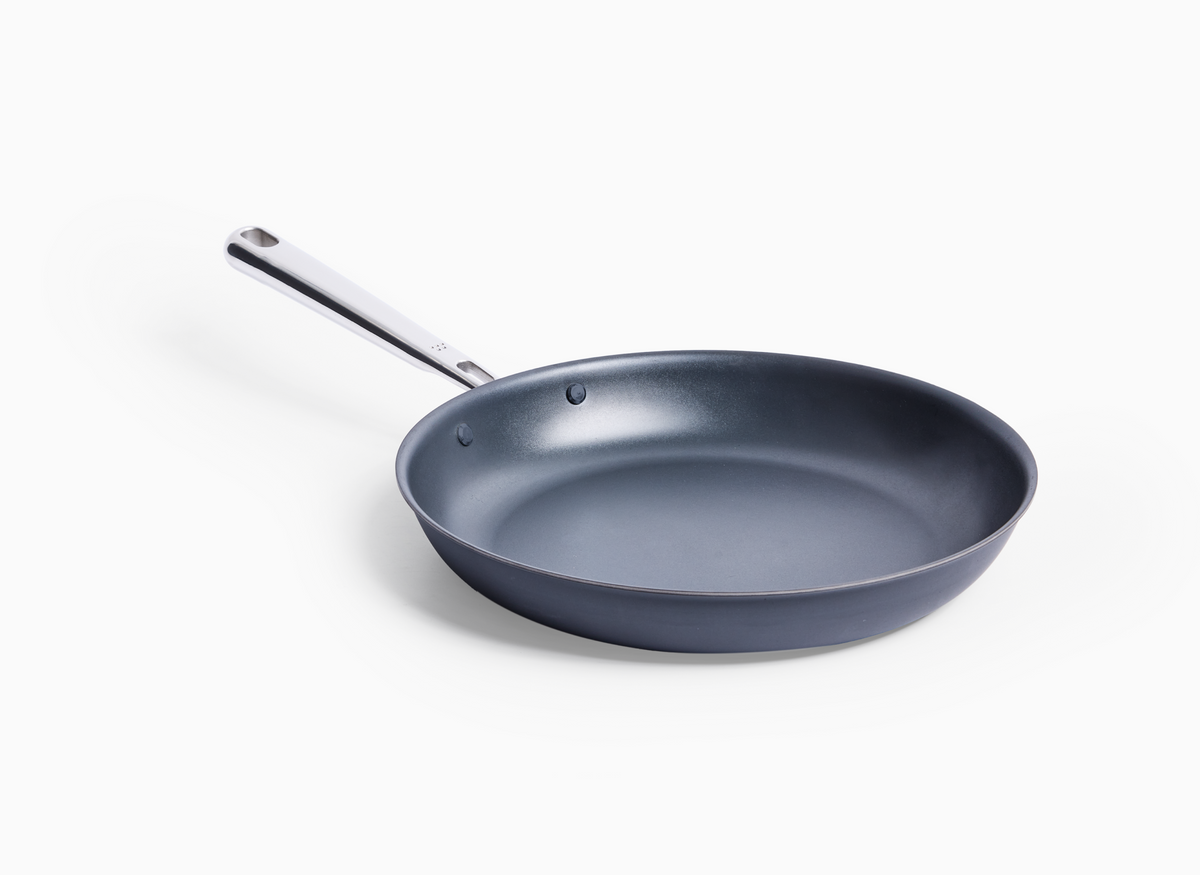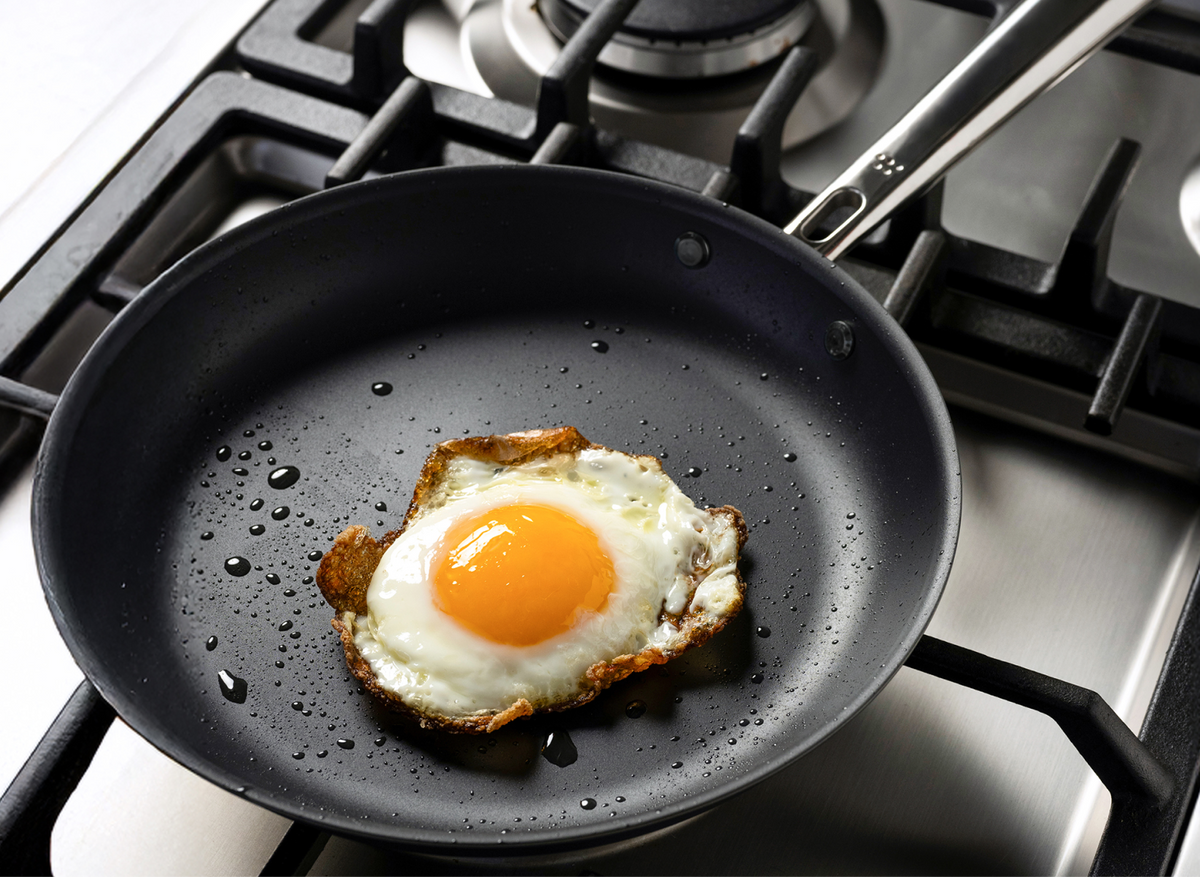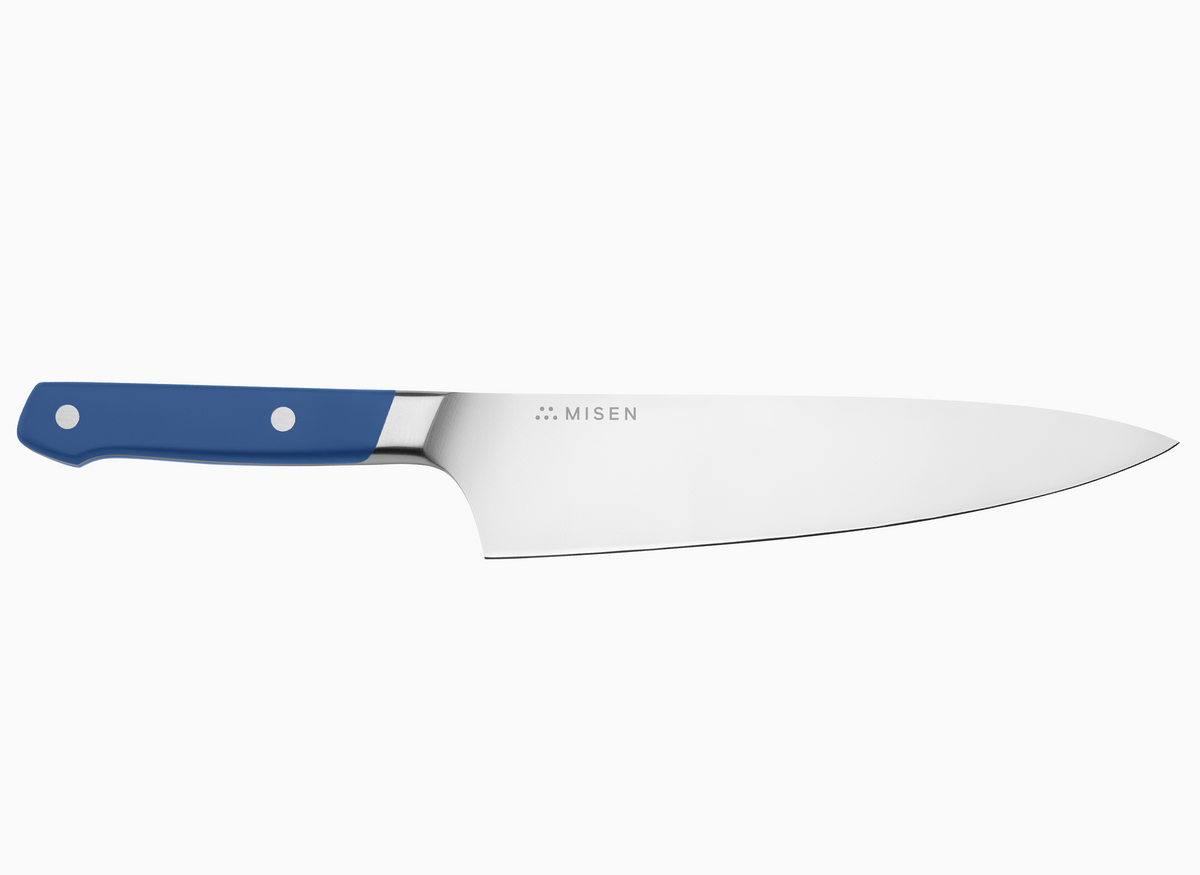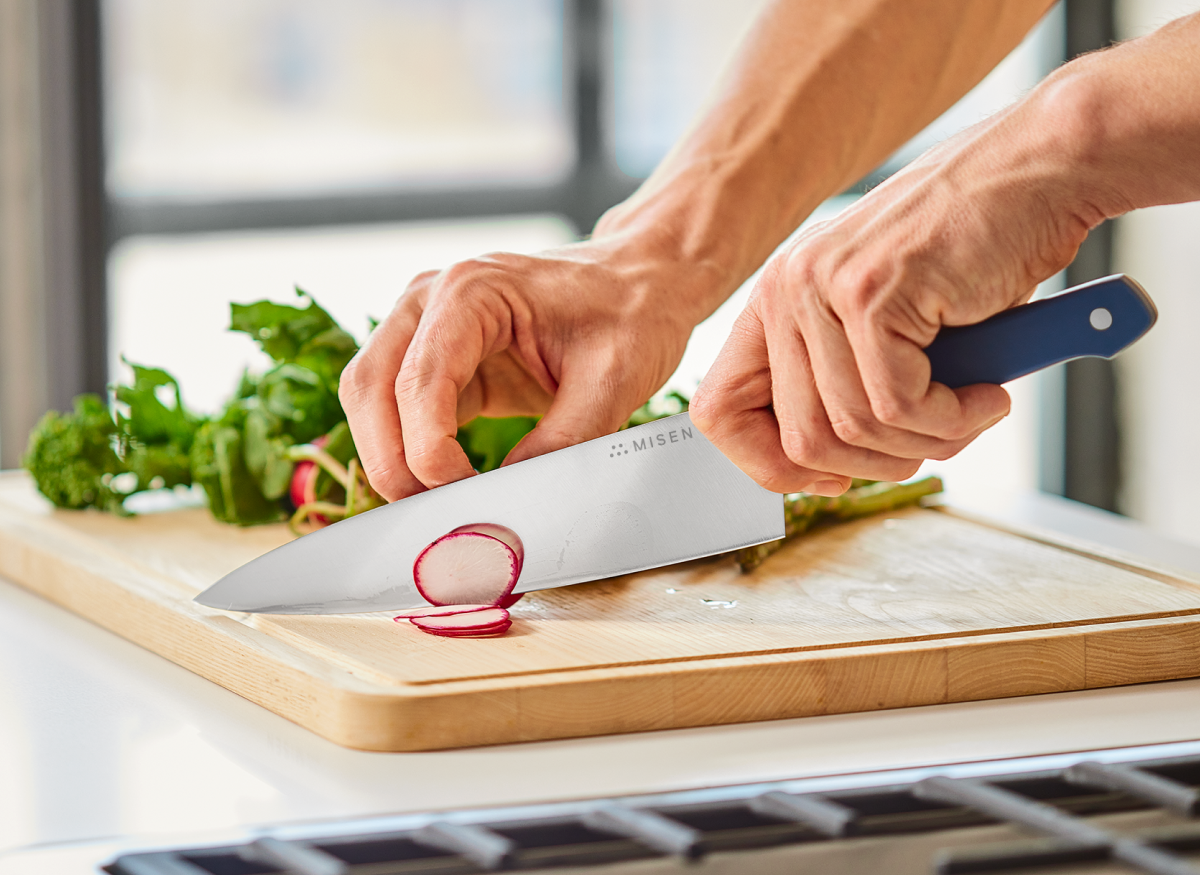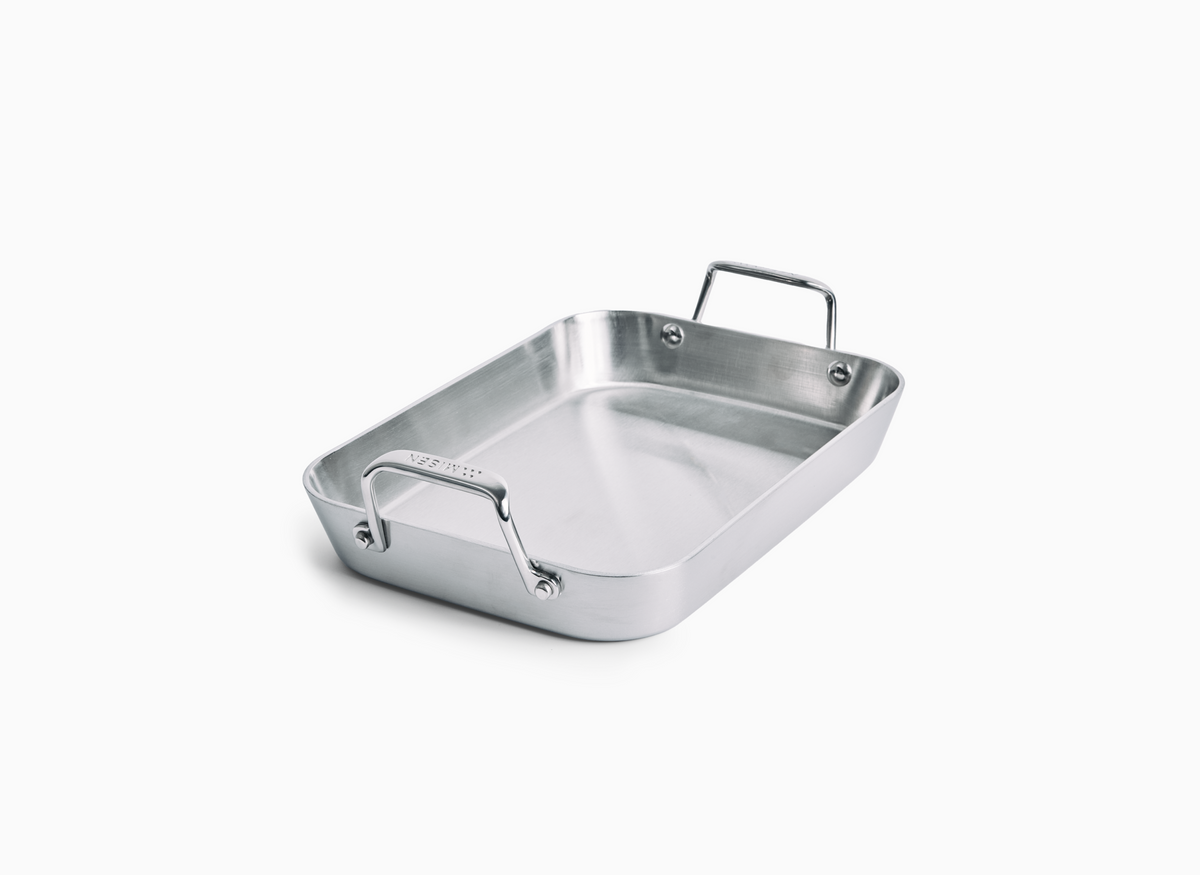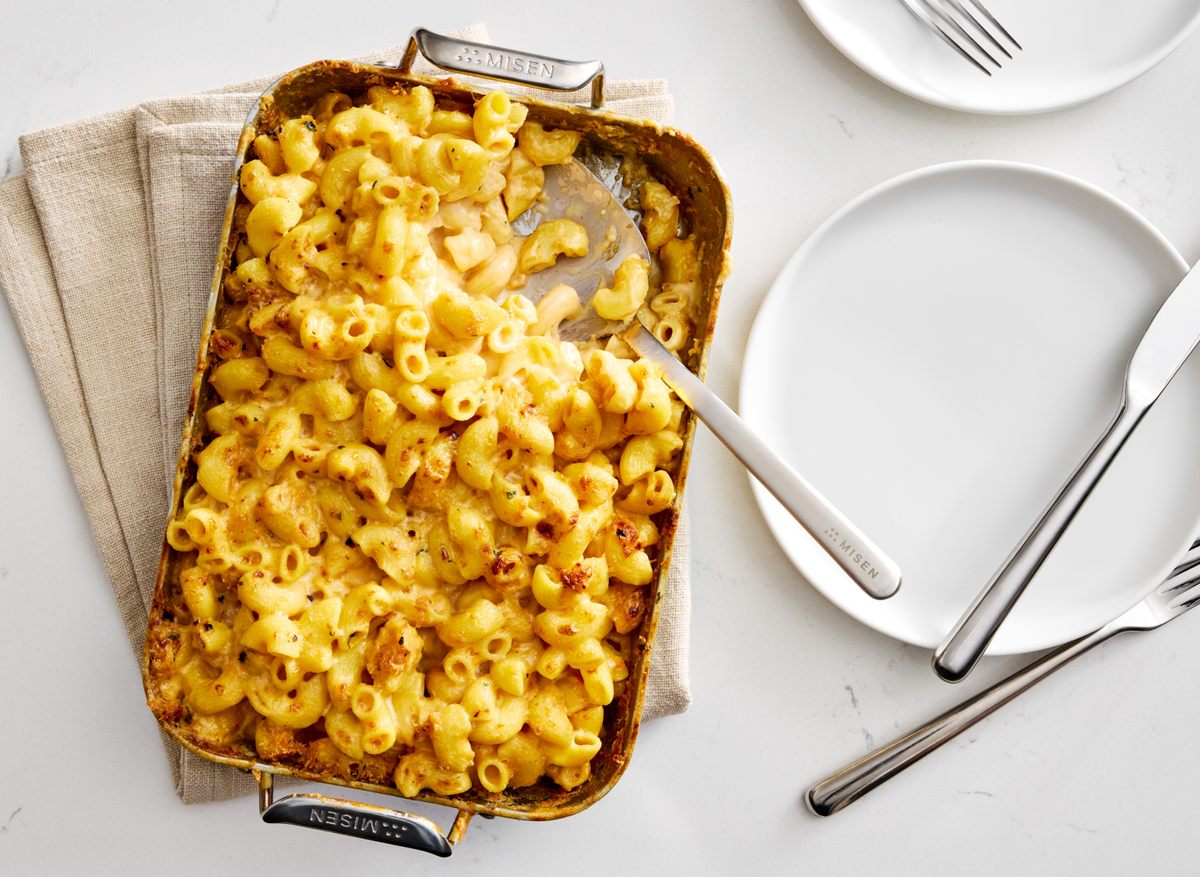Key Difference #1: Rust Resistance
Traditional carbon steel pans, including Misen’s Pre-Seasoned Carbon Steel Pan, are made mostly of iron, which means they’re susceptible to rusting. A soak in the sink or too much leftover moisture can lead to rust spots. To prevent this, you should wash and dry the pan immediately after each use—and ideally heat it on the stove to make sure all the water has evaporated.
Misen’s Carbon Nonstick™ is made from the same material but the nitriding process makes the pan rust-resistent from the start, and it doesn’t require any drying routine. You can let it soak in the sink, wash it, let it air dry, and put it away—without worrying about damage.
Key Difference #2: Seasoning
Seasoning is the key to making a carbon steel pan naturally nonstick. Most carbon steel pans require seasoning before their first use—but Misen’s Pre-Seasoned Carbon Nonstick™ comes pre-seasoned with two thin layers of neutral oil, so you can start cooking on it right away. That said, it will still require careful maintenance over the first 6 to 12 months to build up enough layers of seasoning to make the pan naturally nonstick for the long run. The process can be confusing (is that spot rust or seasoning?), but rest assured you can always start over by stripping and reseasoning your carbon steel pan from scratch.
Our Carbon Nonstick™ pan is nitrided—aka hardened to resist wear and to create a naturally nonstick surface that won’t require additional seasoning. So no upfront work, and no worrying about seasoning being stripped off by washing or cooking acidic foods. Over time, the pan continues to build up seasoning naturally through regular use.
Key Difference #4: Searing Power
If high-heat cooking is a regular part of your kitchen routine, Misen’s Pre-Seasoned Carbon Steel pan is hard to beat. Because it’s made from thick-gauge steel, this pan gets screaming hot and holds that heat incredibly well. That kind of heat retention is exactly what you need to achieve a hard, golden sear and a consistent high temp. Think: a caramelized ribeye, crisp-edged pork chops, pan-fried chicken, and scallops with a restaurant-style crust. Even weeknight go-tos like tofu or Brussels sprouts benefit from the kind of direct, sustained heat this pan delivers.
Carbon Nonstick™ also excels at high-heat cooking—it’s oven-safe up to 500º—but because of that naturally nonstick surface, you won’t see the same level of caramelization and crust you’ll get from cooking with traditional carbon steel.
Key Difference #5: Acids
One of carbon steel’s biggest drawbacks? It doesn’t play well with acidic ingredients. Tomato sauce, wine, lemon juice—these can all strip away seasoning, especially in a newer pan, and force you to start over. This is true for Misen’s Pre-Seasoned Carbon Steel pan and pretty much every other carbon steel pan out there.
Misen’s Carbon Nonstick™, however, is built to handle acids from day one. Thanks to its hardened surface, you can simmer tomato sauce, braise meatballs, or pan-sear salmon with lemon—without worrying about damaging the seasoning. That opens the door to a much wider range of recipes, right out of the box.
Key Difference #5: Weight
Carbon steel is lighter than cast iron, but it’s still hefty—often 3.5 to 4.5 pounds for a 10” pan. Once you add food, that weight can make it tricky to move from stove to oven or to toss vegetables without a wrist workout. Misen’s Pre-Seasoned Carbon Steel pan is lighter than average at 3.2 pounds for a 10” pan.
Misen’s Carbon Nonstick™ uses a 3-ply construction with a lightweight aluminum core. That means it’s closer to a high-end nonstick in weight (2.48 pounds for a 10” pan), making it much easier to maneuver—even when full.
Key Difference #6: Temperature Control
Our Pre-Seasoned Carbon Steel Pan is excellent at retaining heat, which is great for searing, frying, or any method that calls for consistent temps. But it’s not quite as responsive to changes in heat as Carbon Nonstick™, which has an aluminum core. That means it heats up fast, cools down when you need it to, and gives you greater control. And that means better results for delicate dishes like eggs or fish.
So Which One Should You Choose?
Choose Pre-Seasoned Carbon Steel if:
• You love the idea of a “forever” pan that evolves as it ages
• You’re comfortable with a little extra upkeep
• You mostly cook non-acidic dishes
• You value high-heat performance over temperature control
• You want an out-of-the-box nonstick feel but don’t mind seasoning a Carbon Steel pan over time
Choose Carbon Nonstick™ if:
• You want the ease of nonstick in an uncoated, forever pan
• You cook a wide variety of meals—including tomato sauces and acidic dishes
• You value great temperature control
• You want to swap your ceramic or Teflon nonstick pan for a longer-lasting alternative that’s just as easy to use and care for
Both pans are built to last and deliver restaurant-quality results. It just comes down to how much time and effort you want to put in—and what kind of cooking experience you prefer.
You can learn more about Misen Carbon Nonstick™ here, and Misen’s traditional Carbon Steel pan here.
